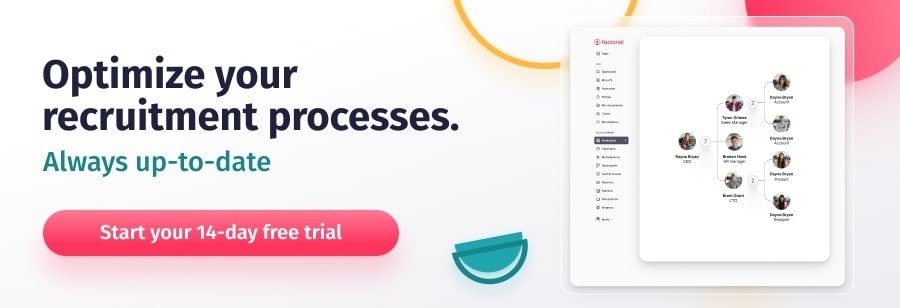Recruitment and selection can be complicated! Successful human resources departments know the importance of the hiring process. Hiring talent is so incredibly important to the company’s long-term success and future objectives.
Companies that have a more thorough recruiting process tend to have a lower turnover rate. Almost always, a company that takes the time can find a candidate that fits both the position and the company work environment. Having the proper recruitment strategy is vital!
In this post, we’ll share with you the steps to a successful recruitment process. We’ll also add in some crucial tips on how to select the right candidate for the job. Many employers forget about the hidden costs of recruitment so we’ll show you what to consider when budgeting for the process of recruitment.
What is the Recruitment & Selection Process?
Recruitment and selection is part of a multi-layered process. Recruitment involves actively seeking out and advertising to potential candidates and obtaining their interest in the position. Selection refers to the process of determining the best candidate from the pool of applicants.
Here are some reasons why a company would open the process of recruitment:
- Fill a temporary absence within the team (maternity leave, medical leave, etc.)
- Replace a staff member who has retired
- Assist with an increased workload
- Get the company started with a new venture
- Cover a newly created position
Before searching for the ideal candidate, the recruiter should consider several factors. These include the characteristics of the role, the number of vacancies they will be covering, and the profile type of the desired candidate. Next, recruiters should lay out a plan of action to carry out the hiring process.
Finally, the company must calculate the cost of the entire process of recruitment and selection. This will determine whether or not it is viable for them to proceed.
Importance of Finding the Right Candidate
Investing in human resources and the process of recruitment is a must! But hiring someone that doesn’t fit the bill could substantially increase the company’s recruitment expenses. A poor recruitment strategy costs time and money. Not to mention, the overall productivity is at risk if the wrong person is brought into the team.
Effective recruiting managers make the most of the time spent recruiting and selecting staff with talent acquisition software.
Recruitment Process: Talent Acquisition & Selection
The process of selecting the right candidate involves planning and strategic action. While hiring new talent, the following components should be considered.
Job Description Offer
A clear and detailed job description is crucial in finding the ideal candidate for the vacancy. The job description needs to be crystal clear in what the role entails. When writing the perfect job description, you should indicate the abilities, knowledge, and necessary experience required.
Advertising the Offer
One of the first hiring steps to finding candidates who fit the bill is to advertise the offer in the correct place. Some companies find specialized job boards to be the best place to connect with job seekers. Others choose to communicate their offer through their website or by advertising on posters, newspapers, or radio.
In addition, social media is a great resource to use when advertising your job postings. If you are on the fence about whether to hire interns, check out the benefits of hiring interns first.
CV (resume) Selection
After gathering all of the resumes, you must narrow down the selection. Following this, it’s time to screen candidates who fit the requirements of the role.
Conducting Personal Interviews
This is the best way to know the potential employees better and gain an understanding of whether they would be a good match in the company. Also, phone interviews are beneficial for recruiters to narrow down the candidates.
Trial Period
You can choose to carry out tests (ie. psychological or role-specific tests), to make sure the candidates meet the requirements of the position. For instance, you may have candidates answer a series of questions that help the recruiter get to know them better. These tests may involve an analysis of a candidate’s problem-solving abilities.
Assessment & Selection of Top Candidates
Assessing interviews and tests allows you to narrow down your search and find the ideal candidate for the role. Using an applicant tracking system, such as the one Factorial offers, can keep you on track and help streamline the process of recruiting staff.
📌 Want to learn more about your recruitment process? This list of the 6 best recruiting analytics software can give you valuable insights so you can make your hiring process more efficient.

Types of Recruitment: Internal vs. External
Consider hiring internally to reduce the number of external candidates. When considering your recruitment strategy, it is important to decide whether you will pursue Internal vs. External Recruitment. What is the difference between internal and external recruitment?
Internal Recruitment
Finding new talent isn’t always about searching for someone new. Internal recruitment can eliminate hiring expenses and save time. If you employ internal recruitment, candidates will already be adapted to the company’s culture and work environment. Additionally, rewarding employees for their work encourages their development and progress. Promotions create a motivated and loyal workforce!
On the downside, internal recruitment can be limiting, especially if you are looking for new approaches. Training new talent also requires time and money, which should be budgeted for.
External Recruitment
The benefits of external recruitment should also be taken into consideration. Sometimes, fresh talent can mean fresh perspectives. Although there is more risk involved with bringing in new faces, it can spur dynamic interactions and growth.
However, the pros of external recruitment come at a price. It requires investing more time and money to hire and train new employees. As mentioned before, there is a greater possibility of employee turnover and loss.
Tips to Streamline Your Recruitment Process
Recruiting new talent is not always a straightforward and simple process. However, here are some pointers that will help you attract and choose the very best prospective hire.
Be Specific with the Job Requirements
If you include too many requirements or not enough, you may be missing out on potential candidates. Tailored job descriptions help to include the right candidates in your talent pool.
Implement an Applicant Tracking System
Applicant tracking systems can help recruiting managers organize candidates and determine the best fit for the position. ATS systems not only alleviate the workload of recruiters but also prevent inefficient spending and wasted time.
An ATS software facilitates the process of recruitment and selection from beginning to end.
Prioritize Diversity
Striving for diversity, equity, and inclusion (DEI) is crucial to the recruiting process. It will make all candidates feel comfortable applying and belonging to a company that values their participation. The more voices and perspectives heard in the workplace, the stronger, more innovative, and more compassionate the company.
Why Budget for Recruitment and Selection?
Budgeting for the recruitment process is typically unconsidered by the hiring manager or those responsible for human resources. The recruitment and selection process can incur a massive economic cost to the company, which should be expected. To avoid future losses, it is vital to invest in the process of staff recruitment.
Tip: The best time to calculate the budget for staff recruitment is during the initial planning phase.
Recruitment Budgeting: The Cost of Recruitment & Selection
To accurately budget the selection process, it is essential to understand the difference between direct and indirect costs.
Direct Costs
These are the costs directly associated with the process of recruitment. Some of these may include:
- Advertisements of the job offer
- Tests and testing material
- Space to interview applicants
- Food and accommodation (if applicable)
- Salaries of the employees
Indirect Costs
The indirect costs are shared expenses between other departments of the company. However, these are not included in the budget. Instead, the costs are divided into the budgets of the various departments they serve.
Recruitment Cost: Calculating the Total
The total costs of recruiting staff = direct costs + indirect costs.
Let’s look at an example to display this process. Assume that our direct costs are 150€ to advertise the job posting, 180€ for the materials of the candidates, 500€ to rent the space, 300€ for housing and food, 80€ for transportation and gas, and 300€ for the salary of the contractors (they each work 10 hours at 30€ per hour).
Let’s say that our indirect costs are 100€ for materials and administration, 40€ for the telephone bill, and 40€ for secretarial services (they work 5 hours at 8€ per hour). The direct costs together, total 1,510€, and the indirect costs together, total; 180€. In total, the recruitment cost for the process is 1,690€.
Recruitment Costs: How to Recruit on a Shoestring Budget
What if the total recruitment cost is higher than the allocated budget? Don’t worry, adjustments can be made! There are ways to reduce direct and indirect expenses involved in the process.
Now you have the keys to calculate the total cost of the recruitment and selection process. Optimizing your hiring plan can increase the overall profitability and success of the company. Remember, that with every new hire, it is necessary to recalculate the hiring costs. This will allow the company to reevaluate its expenses and make adjustments.
Save this guide and consult it every time you are starting the recruitment process. Discover the recruitment and applicant tracking software, included in Factorial’s all-in-one HR solution.
Try out our applicant tracking software and other features with a 14-day day free trial of our software.




From my experience in HR, the most important part is planning and getting to know in advance (as much as you can) how much any of those tasks can take your company. Some small and medium business owners asume that tasks like reviewing CVs could take them only 30 minutes… sometimes, even to the most experienced recruiters it can take a morning! Good to have the cost in money and time to avoid delays :) Thanks for sharing!
Hi Mercedes! Thank you for your feedback, we´re glad you find this useful :D
very nice blog. We all know that a good employee can improve the organization growth. But how will we can get a good employee by recruiting method. By this blog It will help the recruiter to recruit new employee in their company.
Great content on your website, enjoy reading your posts. You have great ideas to work on , they have to be very useful for my writings as well.